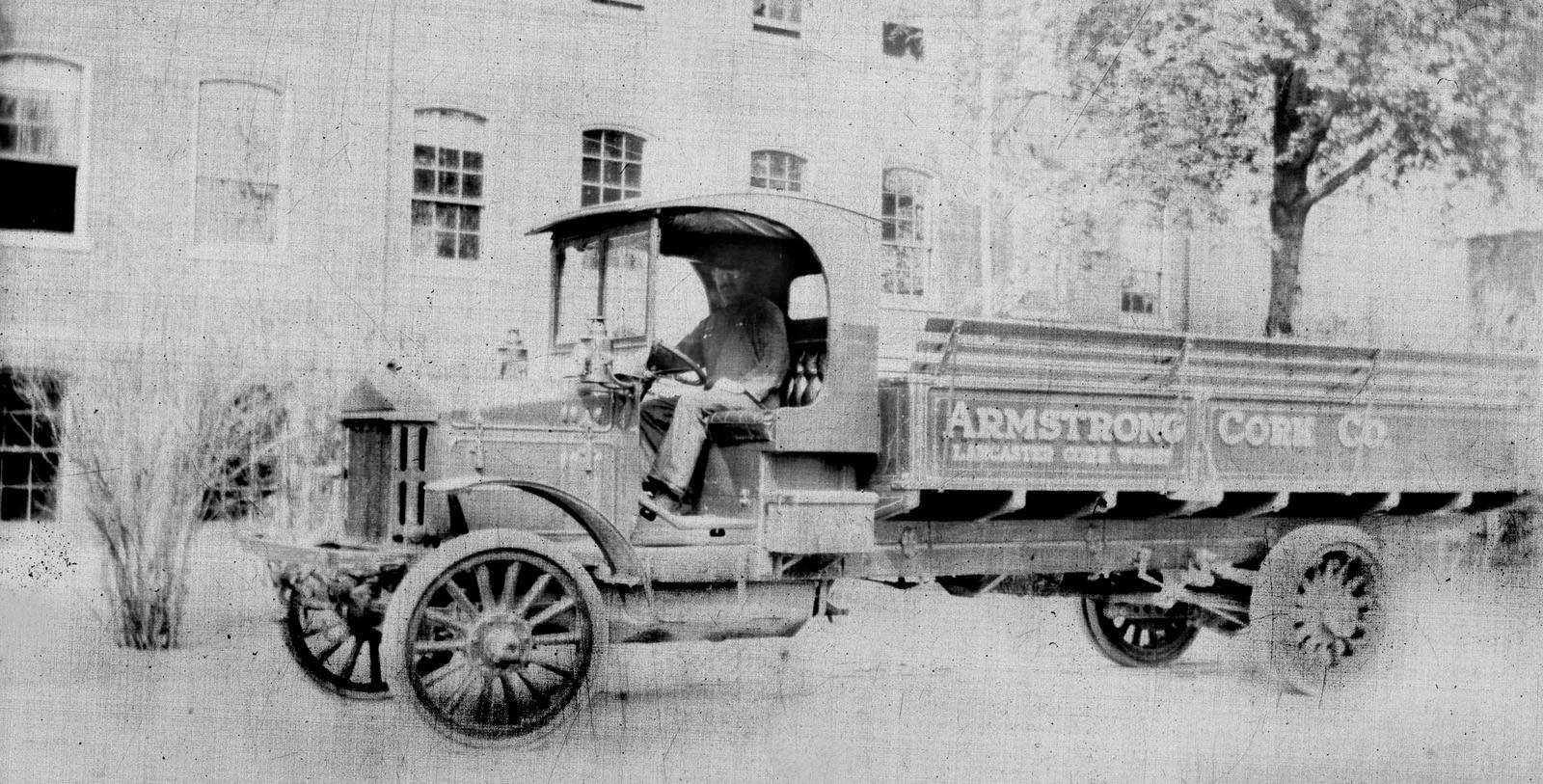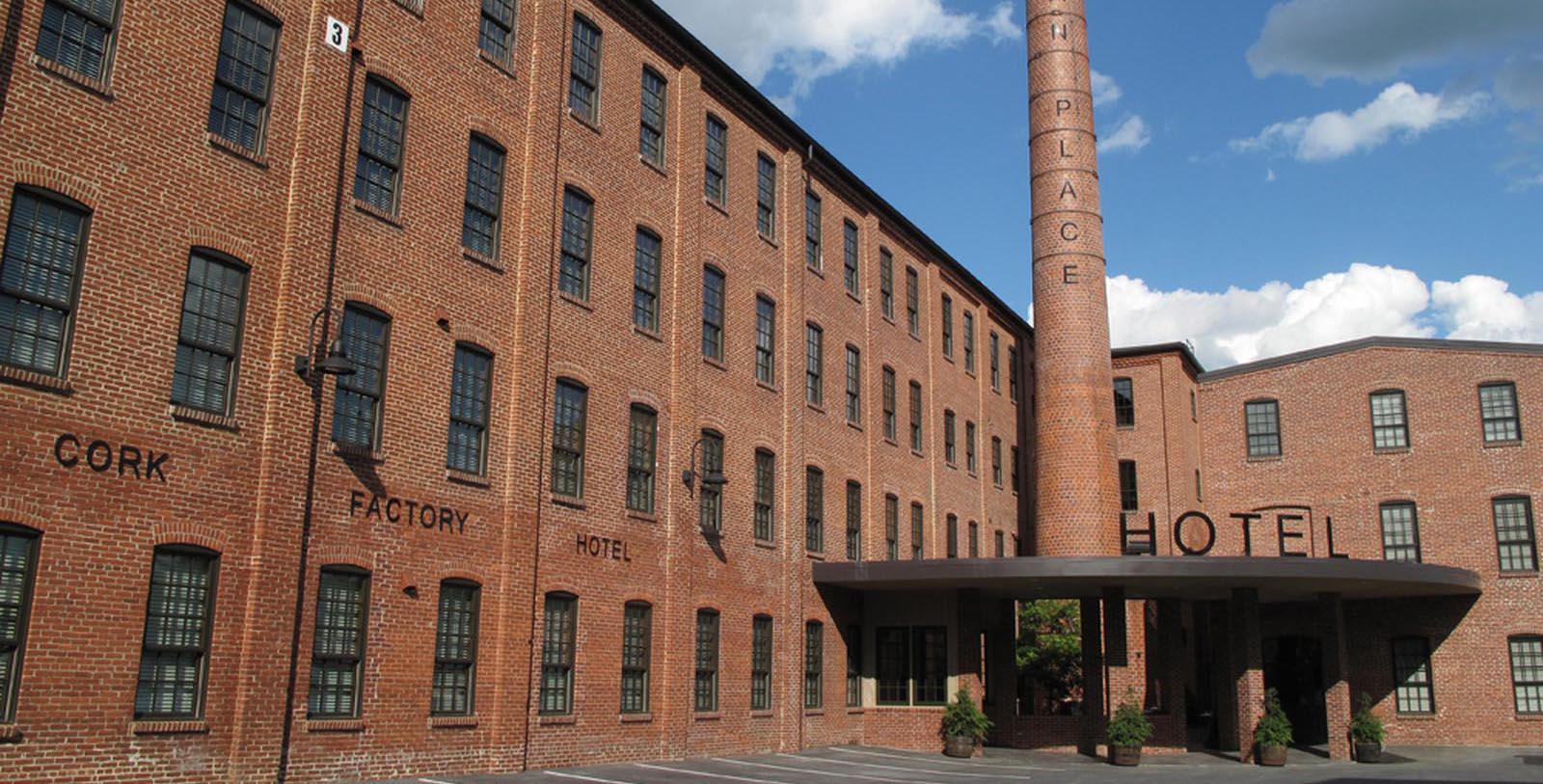Receive for Free - Discover & Explore eNewsletter monthly with advance notice of special offers, packages, and insider savings from 10% - 30% off Best Available Rates at selected hotels.
history
Discover Cork Factory Hotel, which was once a 19th century cork manufacturing giant, Armstrong Cork Company and Kerr Glass Company.
Cork Factory Hotel, a member of Historic Hotels of America since 2010, dates back to 1865.
VIEW TIMELINEA member of Historic Hotels of America since 2010, the Cork Factory Hotel's history makes it one of the best hotels in Lancaster, PA. This fantastic structure once played a central role in Lancaster’s historic economy, serving as a home in the mid-19th century for the Lancaster Cork Company, which produced a variety of cork products for sale. It was one of the many factories located in the heart of Lancaster during the Gilded Age that helped create its identity as a major manufacturing center. In fact, the factory’s productivity attracted the attention of Thomas M. Armstrong, one of America’s foremost producers of cork at the time. The son of Irish immigrants, Armstrong had initially started his business carving cork bottle stoppers by hand. His operations grew steadily, delivering shipments via a wheelbarrow to eventually operating a massive industrial complex in downtown Pittsburgh. By the 1890s, Armstrong had emerged as the largest supplier of cork-related goods throughout the world. Interested in further cultivating his economic endeavors, he began looking around the commonwealth for new places to setup additional operations. In 1895, Armstrong decided to acquire three different plants—including the Lancaster Cork Company’s—for his own Armstrong Brothers Company. Renovations began in earnest immediately thereafter, which transformed the area into the “Armstrong Cork Company.”
Armstrong’s Lancaster complex—specifically called the “Lancaster Closure Plant”—solidified the Armstrong Cork Company’s economic standing, even as cork was gradually supplanted by newer products. Its manufacture of cork gave way to insulated corkboard and fiberboard, before finally settling on linoleum. The Lancaster factories proved so effective in producing the new goods that the entire Armstrong Cork Company completely relocated to Lancaster in 1929. Several dozen workers accompanied the move from Pittsburgh, including all of the corporation’s major executive officers. Among the people to come along was the company’s chief vice president and general manager, C. Dudley Armstrong Jr., who also happened to be a descendant of the Armstrong family. Many local newspapers hailed the transfer, with the Lancaster New Era even stating the city had become both the international capital for linoleum as a result. The Armstrong Cork Company continued to expand, incorporating smaller companies that specialized in making anything from electrical insulation to furniture. As such, the Armstrong Cork Company emerged as one of the most powerful corporations in the whole United States by the middle of the century. Nevertheless, its reemphasis on global operations caused the company’s leadership to consider shifting its operations elsewhere yet again.
In 1969, the Armstrong Cork Company decided to shutter its factories in Lancaster and sold the entire Lancaster Closure Plant complex to the Kerr Glass Manufacturing Corporation. The transaction was one of Armstrong’s greatest, affecting a total of some 800 employees who worked on-site. Thankfully, Kerr remained committed to retaining the workforce and honoring the previous labor contracts arranged by the Armstrong Cork Company. The Kerr Glass Manufacturing Corporation subsequently converted the facilities to make a variety of glass and plastic containers over the next few decades. But in 2000, the business finally stopped production within the historic plant, leaving the area vacant to an uncertain future. Fortunately, new life entered into the complex four years later, when real estate developer Barry Baldwin purchased it for a sum of $1.2 million. He immediately began redeveloping the site into a mixed-use commercial center called “Urban Place” that featured new venues like offices, restaurants, storefronts, and upscale apartments. Baldwin also set aside a wing of the facility for use as a luxurious boutique hotel, which eventually opened in 2009. Now known as the “Cork Factory Hotel” today, this spectacular historic hotel has since become one of Pennsylvania’s most luxurious vacation getaways.
-
About the Location +
The city of Lancaster dates back to the 1730s, when the famous Penn family deeded the area to James Hamilton. In 1730, Hamilton began parceling out land upon a rudimentary street grid based around a rustic town square. Within just a matter of years, though, the nascent community had grown to include a courthouse, jail, and even a few dozen townhouses. A steady stream of families began moving into the town from further east, allured by the outlying farmland that proliferated throughout Lancaster County. Furthermore, the local thoroughfare of King Street was part of the greater Old Pennsylvania Turnpike, which attracted all kinds of merchants from northern Pennsylvania and Maryland. As such, the settlement had expanded to the point where it achieved borough status in just a decade. Businesses were soon ubiquitous across the locale, especially numerous markets that serviced the many farmers who lived just beyond its borders. The residents soon referred to it as “Lancaster” after the English city of the same name, and used the former’s sigil—a red rose—as the symbol for the new town. (The red rose itself originated to the royal House of Lancaster, which once ruled as the kings of England during the 15th century.) Commerce in Lancaster subsequently remained strong right up until the outbreak of the American Revolution, with the community emerging as one of the largest inland town’s within the Thirteen Colonies. But hard times befell Lancaster once the war had ended, as Pennsylvania’s continued expansion westward saw less people traveling through the region. (It nonetheless continued to attract settlers, including the family of future U.S. President James Buchanan.)
Lancaster remained a quiet rural town for some time, even after the Philadelphia and Lancaster Turnpike debuted in 1795. Nevertheless, the town retained some of its previous cultural importance, serving as the state capital from 1799 right up until the War of 1812. But the arrival of the railroads in the 1830s changed everything, however. The railroads diminished the amount of time it took to move goods, thus making it cheaper, too. As such, local entrepreneurs soon took to creating their own industrial operations as soon as the first railroads started passing through in 1834. Industry quickly spread across Lancaster, including factories that produced goods like clothing and ironwork. But the industrial landscape became far more intricate over time, as industrialists started producing everything from confectionary to cigars. There was even a plant that specifically made umbrellas for mass consumption. Among the first industrial facilities to debut were sprawling textiles plants of the historic Conestoga Steam Cotton Works. (Interestingly, the Conestoga Steam Cotton Works would provide more than 80 percent of the textiles used by the Union Army during the American Civil War.) By the late 1880s, it was so massive that it employed more workers than any other factory in Lancaster. Cork factories also hired countless people throughout the community, too, with the Conestoga Cork Works and the Lancaster Cork Works being among the greatest in town. Opened in 1860 and 1875, respectively, the two plants were incredibly prosperous by the height of the Gilded Age. In fact, the renowned Thomas A. Armstrong even acquired the two facilities in order to create the massive Armstrong Cork Company in 1895.
Lancaster’s population swelled considerably, rising from around 7,700 in 1830 to more than 40,000 in 1900. Its size also kept expanding, leading to its eventual rechartering as a city. Industry remained the bedrock of the community, although retail and banking emerged in importance, too. But in the years that followed World War II, Lancaster’s economic fortunes began to decline. Many factories choose to move their operations to other places in the United States, while federally funded mortgages encouraged locals to relocate to quieter communities neighboring Lancaster. Storefronts that had supplied Lancaster for generations finally closed down, with the last grand department store shuttering its doors for good in the early 1990s. Fortunately, Lancaster underwent a cultural renaissance at the dawn of the 21st century, reemerging as a vibrant tourist destination. The city has many historic districts listed on the U.S. National Register of Historic Places that feature countless historical attractions. Those surviving structures are incredibly beautiful, as well, for they display all sorts of historic architectural styles like Colonial Revival, Queen Anne, Italianate, and Second Empire. The city is even home to a few specific renowned landmarks, such as Fulton Theatre, the Lancaster Museum of Art, the Lancaster Science Factory, and the home of noted abolitionist Thaddeus Stevens. Even Wheatfield, the estate of U.S. President James Buchanan, resides within Lancaster. Many other famous cultural heritage landmarks reside just outside of Lancaster, as well, such as the Dutch Wonderland, the Strasburg Railroad, and The Amish Village. As such, cultural heritage travelers will absolutely adore visiting the historic streets of Lancaster, Pennsylvania.
-
About the Architecture +
The Cork Factory Hotel possesses a unique architectural style that can best be described as “eclectic.” Dating to the mid-19th and early 20th centuries, historians today consider “eclecticism” to be part of a much larger movement to fuse together a variety of historical designs. Earlier in the 1800s, architects—particularly those in Europe—decided to rely upon their own loose interpretations of historical architecture whenever they attempted to replicate it. Such a practice appeared within such styles as Gothic Revival, Italianate, and Second Empire architecture. But at the height of the Gilded Age, those architects decided to use historic architecture more literally when developing a building. A few architects went a step further by combining certain historical styles together to achieve something uniquely beautiful. And in some cases, those individuals felt inspired to add a new historical form onto a building that they were renovating—just like the Cork Factory Hotel. Ultimately, the architects felt that joining such architectural forms together would give them a new avenue of expression that they otherwise did not have at the time. They also believed that they had stayed true to the earlier forms, having perfectly replicated whatever it was they wanted to mimic.
In Europe, this approach first appeared as a rehash of Gothic Revival-style known as “Collegiate Gothic.” The European architects then used such a mentality to influence the unfolding philosophies of both the Beaux-Arts school of design, as well as the emerging Renaissance Revival-style. Many architects in America followed suit, the most notable of which being Richard Morris Hunt and Charles Follen McKim. The American architects who embraced “eclecticism” were at first interested in the country’s colonial architecture. Much of the desire to return to the time period was born from the revived interest in American culture brought on by the Centennial Exposition of 1876. Pride in preserving the nation’s heritage inspired the architects to perfect the design principles of their colonial forefathers in new and intriguing ways. This interest gradually splintered into other revival styles, though, like Spanish Colonial and Tudor Revival. Some Americans even infused the approach with the popular Beaux-Arts aesthetics of France, such as Hunt and McKim. Yet, the birth of Modernism in the 1920s and 1930s eventually ended the worldwide love affair with “eclecticism,” for architects throughout the West became more enchanted with the ideas of modernity, technology, and progress.

































